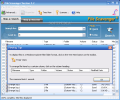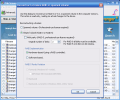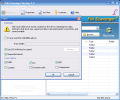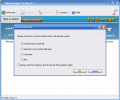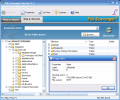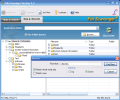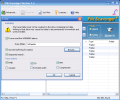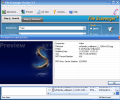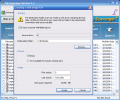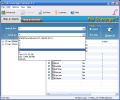Different tools for Disk Management give us lots of options for creating a comfortable environment, like merging, resizing, deleting or formatting hard disk volumes. Dealing with the lack of space may sometimes lead to wiping data, but what about file recovery? And, more importantly, can we recover uncorrupted data after all these operations take place?
My first steps using a computer were taken with the help of MS DOS. After fooling around for a couple of days with the system's commands I realized that erasing a file or a directory from the hard drive was a one way process and I had to be very careful with what I was doing. Even when using Windows '95 - where the Recycle Bin took this burden off my shoulders - I still had to pay attention to what I was deleting. The whole idea of recovering the files was a bit awkward to me since I knew that Shift+Delete bypasses the safety net and all my files would be lost forever. And I was very well aware of what that meant. Well, I guess I was right 14 years ago, but I started to see things in a brand new perspective when I found out about File Scavenger, a data recovery application.
Since the demo version comes with some tiny limitations I said to myself I must give it a try. It can be installed on a hard drive or be run from portable storage device such as a memory stick, removable drive or CD. Being tested on Windows Vista Business Edition and Windows XP Home Edition, the demo license allows up to 64 kilobytes of the lost files to be recovered, which is enough to realize the true substance of this software. And if you decide to buy it later you can recover the files in their entirety, as the program doesn't affect the source disk. In the end, you want all your recovered data to be integrity validated.
Being in a constant need for help, the first thing I do after installing is to look in the Assistance menu. In the case of File Scavenger I found it well developed, rich in technical and non-technical support and with answers to all of your questions. In there I found out about the benefits of creating a disk image and what is the difference between its two options. This image is a backup of deleted information of a selected partition. Loading the backup file adds it in the Search field. For more information you can check the publisher's website, where you can find FAQ section, for details about recovery issues, data types and disk formats, topics about most of the events leading to data loss and much more.
File Scavenger is a file undeleter designed to retrieve files from a variety of storage devices (USB keys included). It is worth mentioning that there isn't any refresh button in the interface except in the Search->Look-in sub-menu (this comes in handy in the case of removable drives). Starting from the rule of thumb that nothing is erased from the support medium unless it is being overwritten, deleted files from Recycled Bin or a network drive, from Windows Explorer or a DOS window are being recovered in no time. Even when a volume has been deleted and its original position on disk and size are unknown, File Scavenger can scan an entire physical hard drive to look for traces of defunct volumes, and this is extremely pleasing because now I know that everything I lost is not "dead and buried" anymore.
The Save Session feature is indeed very helpful in avoiding permanent writing over the lost data. The current state is saved to a File Scavenger session file and it can be restarted via the Load function without rescanning. This method can save minutes or even hours.
Looking under the hood, File Scavenger supports NTFS compression, basic and dynamic disks, sparse files, alternate data streams. Except for cases where the information has been overwritten, both data (including its properties like name, type and date) and the folder path will be recovered flawlessly. All the technical information can be googled for a better knowledge in the area, but what is worth mentioning is that the program uses algorithms which can bring back data from reformatted, corrupted or spanned volumes, partially damaged disks containing bad clusters and even from broken striped volumes (i.e. RAID 0 or RAID 5) ? provided that the physical drives are still accessible individually.
File Scavenger is a comprehensive undeleting tool designed for Windows platform with NTFS or FAT/FAT32 file system. Although it looks professional, anyone from beginner to expert should be able to use it and take advantage of its features. It has Tree View option, helpful in case you want a different type of viewing for the lost files, overwrite options in case the destination folder is not empty and recovery option for partial files or for the storage medium sector's exclusion.
The Good
It is easy to use and the interface is user-friendly. Working fast, it restores your files even from broken volumes and leaves nothing unaccounted for. It has the session feature to prevent overwritten data to be lost and to save the time of rescanning and disk image feature to create an exact copy of deleted files on your drive. Thanks to the provided setof guidelines and external support there is no way for you to get lost while working with it. It does keep you away from all the high priced data recovery companies and can be a real life saver.
The Bad
What is missing from this software are the search and display filters that can help you sort the files by date or time. Preview option is limited to the popular image files only (BMP, PNG, GIF, etc.). The search and recovering process takes quite a while if the support medium has a large capacity. The same goes for creating a disk image file in text format. Although a search for the entire disk is implemented, the result looks like only the bootable partition (C: in my case) is going to be verified. Refresh needs sometimes to be activated manually. Because of the limitations of the software the Session feature could not be tested.
The Truth
Although you may not be in serious trouble now, you really like to see how this program works. At least it's worth being tested. In the very next weeks I'm sure it will help you. The software application is only provided in English, but the publisher's web page has multilanguage support (English, French, German and Japanese).
Here are some snapshots of the application in action:
 14 DAY TRIAL //
14 DAY TRIAL // 